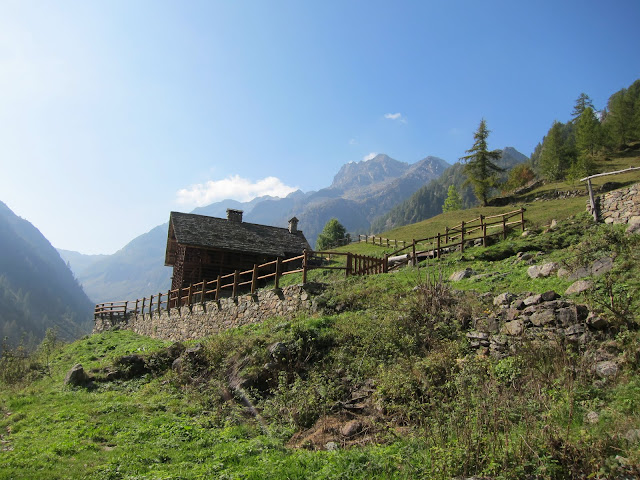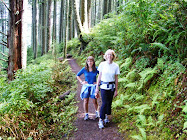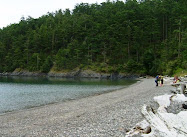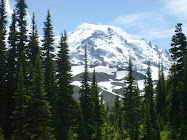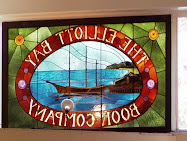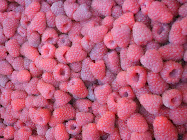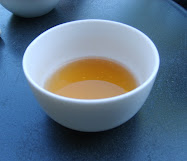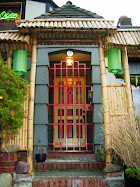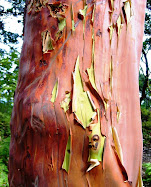Occasionally I do stray outside the Pacific Northwest. I'm currently enjoying the marvelous outdoors, people, and cuisine of Italy.
“You’re walking on history,” exclaims Mario as we start up the worn and rustic stone trail. Here in an impossibly picturesque valley in the
Piemonte region of Northwest Italy, we’re blessed with a beautiful autumn day for a hike
and a most gracious host.
“People traveled along this route 700 to 800 years ago from France and Switzerland in times of famine,” Mario tells us. Vestiges of ancient
Walser villages and culture remain here, reminders of a Germanic people who migrated to the steep Alpine valleys of present-day Northwest Italy.
We started our hike today after driving to the end of the winding road that switchbacks up Val Vogna from the village of
Riva Valdobbia in Val Sesia (Sesia Valley), a few valleys northeast of more famous Val d’Aosta. En route to
Lago (Lake) Larecchio, we’ve passed a small cluster of former Walser homes and a small stone church first built in 1433, and crossed a centuries-old stone bridge built by Napolean's soldiers. History and evidence of human habitation and use, past and present, permeates the Alps.
After an hour hiking up past streams and waterfalls, through sloping pastures full of grazing
bruno alpina (brown alpine cows), and a larch forest with views of Corno Bianco peak, we arrive at a large meadow. “This used to be a much bigger lake,” says Mario as we walk along a gentle stream that meanders through the Alpe Larecchio meadow, interspersed with a few shepherd summer homes. Small trout dart through the clear water. Above craggy alpine peaks pierce the skyline.
Beyond a small rise lies a much smaller alpine lake, where we plop down for a picnic of delicious local Toma del Maccagno and Gorgonzola cheeses, sausage, and bread. It’s the cusp of autumn, and the shrubs and larch trees lining the vivid blue-green lake are just starting to turn gold and crimson. No one else is here at this postcard perfect setting but us—for a little while, our own small slice of paradise.
“My life is in Novarra,” says Mario, who lives there in the plains west of Milan with his family and owns a small business, “but my heart is in this valley.” As a gal whose heart is in the Cascade Mountains of the Pacific Northwest, I understand
exactly what he means.
Yesterday Mario took us on a rigorous hike up the end of the Valsesia in the Parco Naturele Alta Valsesia. Our trek started on a stone road built during World War II, then continued past slopes full of brown cows and up a glacier-scoured slope above timberline to a slate-roofed mountain hut (Rifugio Barba Ferrero). For much of the hike our soundtrack was the sonorous ringing of cowbells.
 |
Rifugio Barba Ferrero
|
Although the clouds lowered and obscured our views of the snow-covered peaks above of 4,000+-meter (15,000+ feet)
Monte Rosa, we did catch glimpses of a large receding glacier just a few hundred feet above. “When I was a boy, this glacier extended much lower,” Mario told us. Climate change is very visible in the Alps, where glaciers have retreated back up many mountains.
 |
Toe of receding glacier
|
Along the way, I noticed similarities to my own Cascades—stinging nettles, larch trees, many similar wildflowers—and some interesting differences. On the way down from the rifugio, Mario stopped to pick some wild berries and offered them to me: raspberries, exactly like those cultivated in my home state of Washington but much smaller and sweeter.
We’re lucky to be here when an unusual early fall heat wave is covering most of Europe, bringing us warmth, sunshine, and perfect hiking weather. Life is sweet here in Northwest Italy!
When You Go
The Sesia Valley is less visited and more low-key than the well-known Val d’Aosta, which to me made it an ideal destination. If you go, be sure and stop by da Mario’s pub in old Riva Valdobbia for some beer and
miaccia—a local flat bread folded over fresh regional cheeses and prosciutto, much like a quesadilla familiar to North Americans. Also stop by Pedemonte, a large historic Walser village with a museum, near Alagna, a ski town.
We hiked the trail number 1 to Lago Larrechio, starting at the Oratory of San Antonio in the Val Nera (Black Valley) portion of Val Vogna, a gain of about 1,300 feet in a few miles. The first day we hiked trail number 7 up to Rifugio Barba Ferrero, covering about 5.5 miles and gaining 2,200 feet in elevation.
You need hiking boots or sturdy trail runner shoes because the trail can be muddy and quite rocky in places (plus you’ll likely be dodging cow manure on the lower portion of the trail). During the summer and on weekends into October you can purchase lunch at the rifugio. Be sure and bring plenty of water, although we drank directly from some of the streams higher up that Mario knew were safe.


































